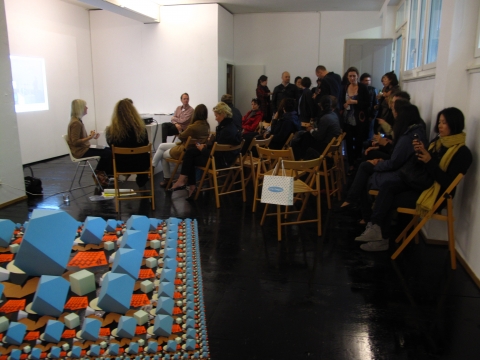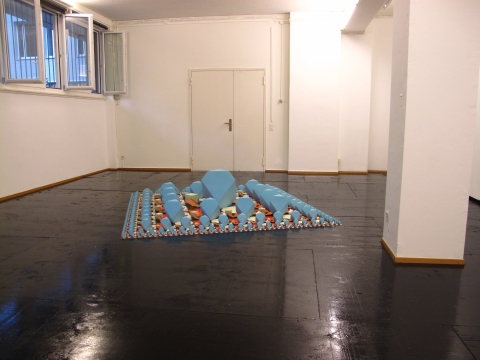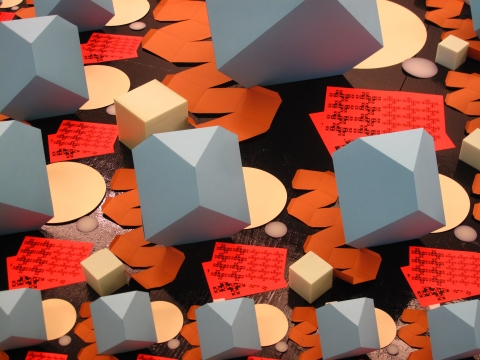curating.org
Shared Projects
Abstract Possible
Curated by Maria Lind, produced and mediated by students of the Postgraduate Programme in Curating
14 May–29 May 2011
White Space Zurich
Wade Guyton and Tommy Støckel
Abstract Possible is a research project which aims at exploring notions of abstraction, taking contemporary art as its starting point. This project is a two year development which will manifest in various locations.
The next iteration of this project will take place in the White Space // Office for Curating/ Art/ Theory in Zurich, Switzerland.
Clandestine, opaque, hermetic and abstract are all buzzwords frequently used in discussions of contemporary art over the last decade. A plethora of examples of formal abstraction, both geometric and expressive, are visible in exhibitions, site-specific installations, publications, and other projects. In addition to the many cases where geometric abstraction in art and design becomes a lifestyle indicator, artists contemplate and engage with the legacy of modernist abstraction as the result of highly specific artistic and ideological trajectories. But what does it mean to revisit these trajectories from the point of view of today? The concept of abstraction has also—within a Marxist framework—been applied to all relations within a capitalist system. As of late, this has been extended to the logic and distortion of scale engendered by the post-Fordist/late capitalist economy.
Working conditions, and conditions of production, are other pertinent points of reference here. All this is happening within a culture and an economy in which we literally “live under abstraction,” although the economic recession has more recently called such abstraction into relief. As the art critic and theoretician Sven Lütticken recently put it “We are the natives of abstraction.” In that case we have to acknowledge abstraction as omnipresent, not unlike the ideal of transparency in liberal democracies. What is the potential of abstraction in such a contested territory? At the same time it is easy to observe yet another manifestation of abstraction, namely the use of strategies of withdrawal (abstrahere, to withdraw) among artists and other cultural producers.
It is abstraction as conscious methods of obscuring and entering this formal terrain “at an angle”, often with the aim of creating more space for maneouvering through self-organized initiatives. These developments have been discussed in terms of “strategic essentialism” as well as “strategic separatism”. Sometimes it seems to be a reaction to pressures of spectacularization and access, at other times it seems to draw on specific art historical developments. Perhaps we can begin to think of these abstract/opaque strategies and tactics as a different critical paradigm challenging the enlightenment paradigm based on transparency? Or is it yet another phenomenon obscuring our view of the world? Each stage, or station, of Abstract Possible will be different with unique “sub-projects” which can be manifested as group shows, solo presentations, seminars, workshops, screenings, etc., depending on the nature of the location and the collaborations.
Other manifestations of Abstract Possible include an exhibition at the C-salen project space, at Malmö Konsthall (10 November 2010 – 16 January 2011) and Museo Tamayo in Mexico City (26 March – 14 August 2011)
Curator: Maria Lind
Production and Mediation: Students of the Postgraduate Programme in Curating.




